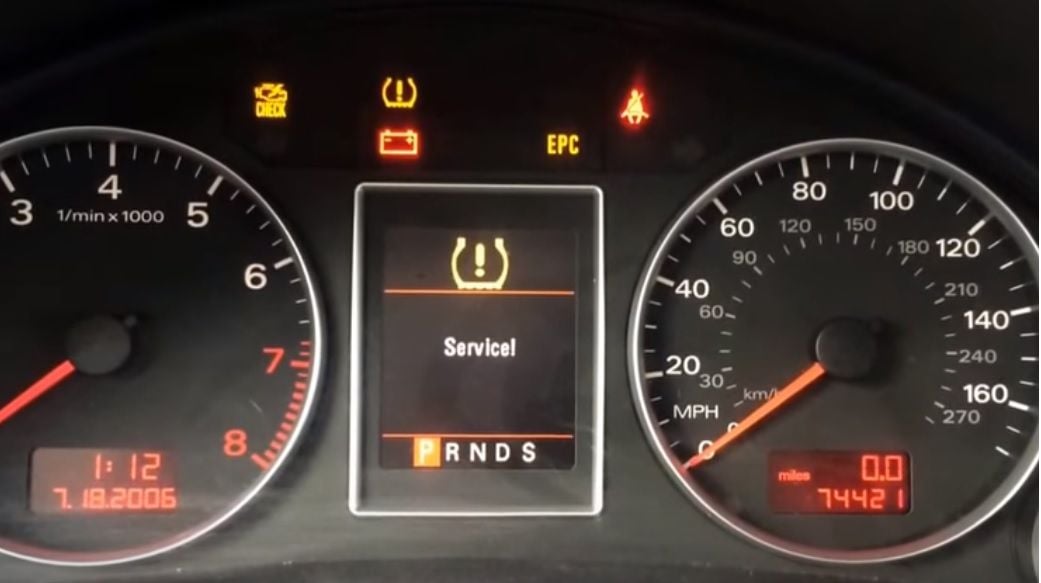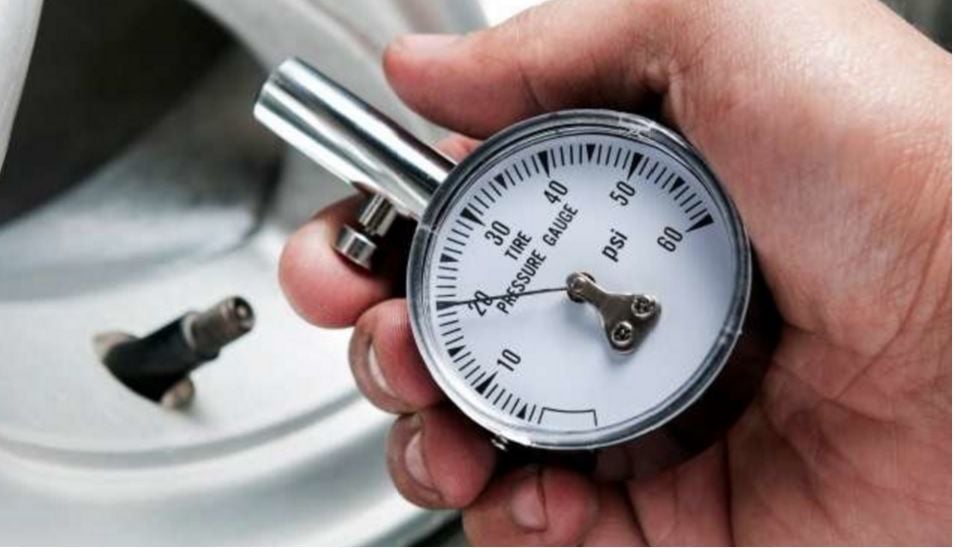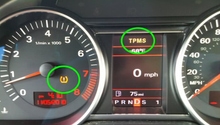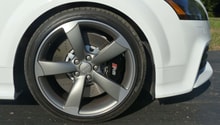Audi: Why is My Tire Pressure Light On?
If your TPMS warning light appears on your dashboard, you can diagnose the underlying tire issue using this information.
This article applies to the Audi Q5/Q7, A3, A4 B7, A4 B8, A6 C5, A6 C6.
It's normal to have concerns about the yellow warning light indicating that the tire pressure isn't quite right. Some tire pressure specifications will vary by model year, with 2010 and later model year Audis in the A and Q series having a different calibration and alter system. You can find PSI information in your owner's manual or on the sticker located on the door jamb. Here's how to diagnose the Tire Pressure Monitoring System warning light should it appear on your Audi's dashboard.
Warning Messages on Dashboard
You might see the TPMS warning on your Audi dashboard, which is a yellow warning icon noted by an exclamation point. A text message below the icon might tell you that pressure in one of the tires is low.
Some Audi models will show a diagram with one of the tires appearing to be smaller in diameter than the other tires, due to under-inflation. This will show that one or two tires are low in pressure, but it won’t appear when all four tires are equally low.

Use a Gauge on Your Tires
Some Audi owners say they’ve added tire pressure until the light went off on their tire pressure monitoring system. After driving for several miles, the tire pressure yellow symbol flashed on again. In this case, you likely have a small leak, in which case you can either keep filling your tires regularly to meet the standard PSI level, or you can have the tire(s) replaced to alleviate the issue.
Check your tire pressures against the values shown for normal load, which you’ll find at near the end of your Owner's Manual. Then use a tire gauge to check the actual tire pressure to make sure it meets the recommend tire pressure level. If you don't own a tire pressure gauge, head to your local gas station where they have free air stations equipped with a tire gauge tool.

Sensors Changed with Audi 2010 Model Year and Later
Audis that are 2010 model year and later no longer display actual pounds per square inch (PSI), but instead display a warning sign if the pressure is too low. Newer models use ABS sensors and analyze the waveform to determine if a tire is low. Audi used active TPMS sensors prior to the 2010 model year.
In order for TPMS to work with this system in 2010 or later vehicles, you need to set the pressures at the correct value and then reset the TPMS calibration in the Multi Media Interface (MMI) system. After about 20 minutes of driving at various speeds, the system finishes the calibration/learning process and will be complete.

Related Discussions
- Low Tire Pressure Indicator Display Message - Audiworld.com
- TPMS Warning False Alarm - Audiworld.com
- TPMS 2012/2013 - Audiworld.com






